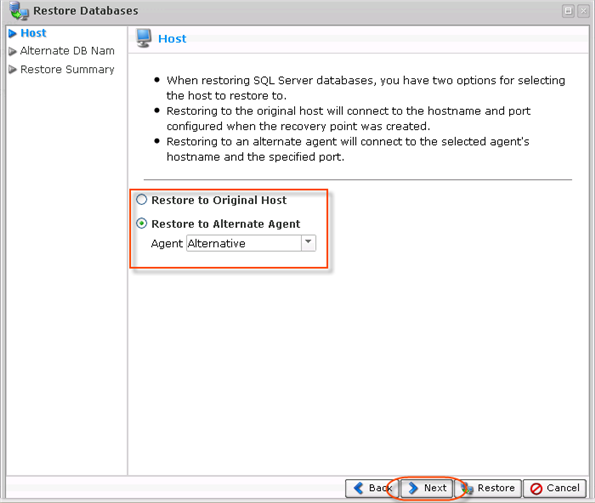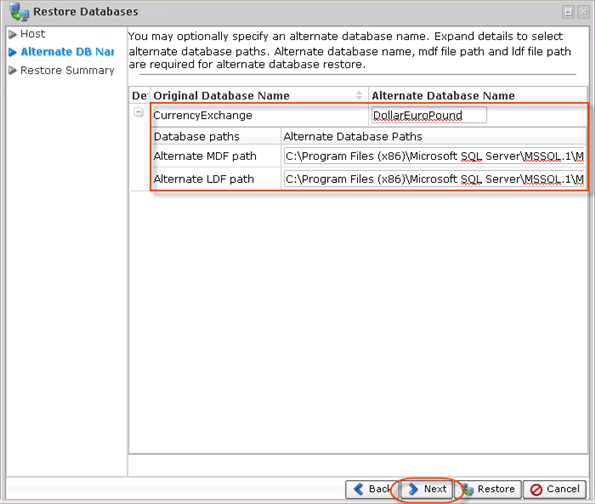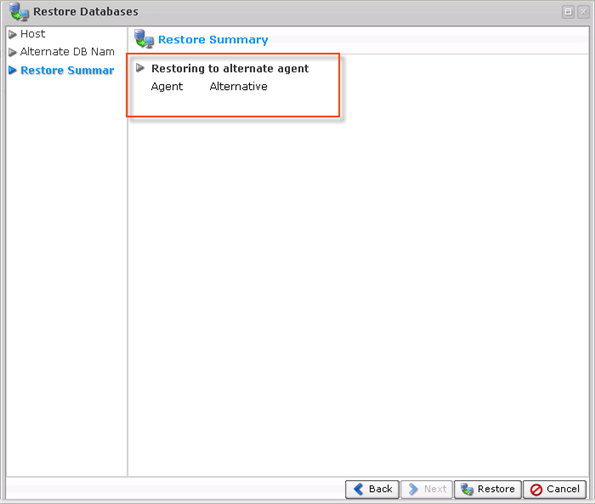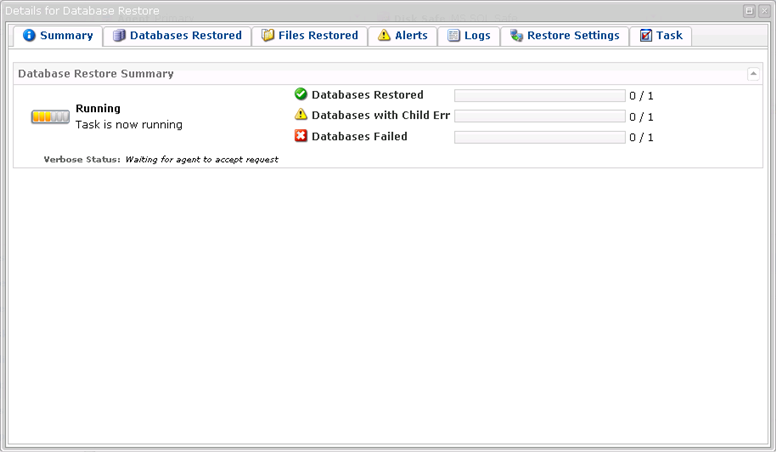| Tip As an alternative to using the Databases Add-on, you can restore a database's MDF and LDF files using the File Restore function, and then issuing an "Attach Database" query. |
You can restore an MS SQL Server database or databases to an alternate location by following the instructions listed below in your CDP Enterprise Edition.
| Note MySQL database tables can be restored simultaneously; this is implemented by using multiple threads. |
1. Click on "Recovery Points" in the Main Menu to open the "Recovery Points" screen.

2. In the "Recovery Points" list, select a Recovery Point containing the database replication that you want to restore.
| Tip To find a Recovery Point, you can use the Basic or Advanced List Filter. See Customizing the Recovery Points List. |
Click on the "Browse Databases" icon in the "Actions" column for this Recovery Point.

3. The "Browse Databases" window opens. Select a database instance from the drop-down menu.

4. You can browse the instance by clicking the "+" icon.

5. Select the database you want to restore, and click "Restore Selected."

| Notice The system databases master, msdb, model, and tempdb are not displayed in the "Restore Databases" wizard. To restore these databases, use the Bare-Metal Restore function. |
| Tip To be able to restore an alternate database, do not check the "Databases" box. Instead, select the desired databases by clicking the check-box next to each database you want to restore. See also: MS SQL Server Restore with Alternate Name. |
6. In the displayed "Restore Databases" wizard window, define the options for the restore.
- Restore to Original Host - If you select this option, the restore will be made to the Agent where the source database was located. If the database exists, it can be overwritten.
- Restore to Alternate Agent - Select a destination Agent that is in the system. Specify the database host and port. Available only in Enterprise Edition.
In our example, we select the "Restore to Alternate Agent" option to connect to the selected Agent's host name and the specified port.
Click "Next" to proceed to the following step.

7. On the "Alternate DB Names" screen, define an alternate database name for any of the selected databases for restore as a new step in the "Restore Databases" wizard. If a database with the new name already exists, that restore will fail and will alert the Policy.
Expand the details to select alternate database paths.
The database can be restored to a different location with a different name. Make sure that you provide the alternate database name and the alternate .mdf and .ldf file paths.
| Tip Do not provide extensions. |
| Tip When performing an MS SQL Server restore to an alternate directory, the directory must already exist. Create an alternate restore directory before restoring the MS SQL Server to it. Read more in MS SQL Server Restore to Alternate Location. |
Click "Next" to proceed to the following step.

8. On the last "Summary" screen, the settings you have selected are displayed.

9. Once you have verified that the specified settings are correct, click "Restore." The restore process will start immediately.

10. The "Details for Database Restore" window will appear. It indicates that the restore process has been launched. You can watch the progress in real time.

